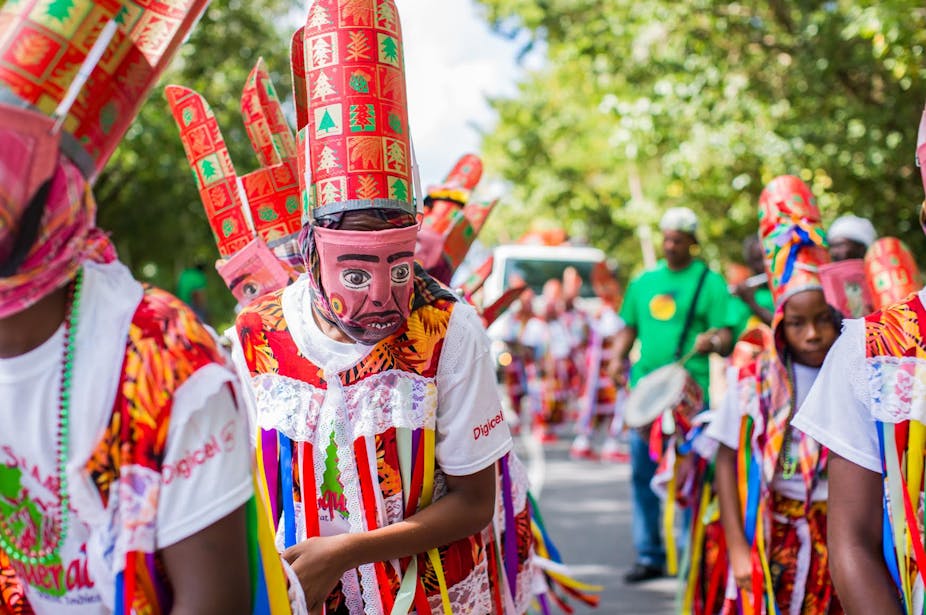A new exhibition at Epic, Dublin’s Irish emigration museum, explores connections between Ireland and the Caribbean. Entangled Islands aims to tell “the stories of a wide range of Irish people who traversed and settled in the Caribbean”, while also outlining “our intersecting histories of colonisation and resistance”.
The exhibition was partly inspired by growing academic research into connections between Ireland and the Caribbean in the last 20 years. Such research, as the exhibition explains, “complicates understandings of the Irish diaspora as a historically marginalised people”. The extent of this scholarship is clear across the exhibition, although the tone is accessible throughout.
One prominent theme is a reevaluation of Ireland’s role in the transatlantic slave trade. The topic has previously been tackled in books such as Ireland, Slavery and Anti-Slavery: 1812-1965 by Nini Rodgers (2007) and Ireland, Slavery and the Caribbean (2023), edited by Finola O’Kane and Ciaran O’Neill.
The exhibition focuses mainly on the stories of individual Irish people in the Caribbean, with some limited exploration of the wider context. While there are references to the positions of power many Irish people held under the colonial system, the extent of this fact – or its brutalities – do not occupy a large portion of the exhibition.
For example, an early panel explores Howe Peter Browne, the second marquess of Sligo, who became governor of Jamaica in 1834. This is a significant date given that the Slavery Abolition Act of 1833 was coming into effect when he arrived.

The exhibition makes much of the fact that Browne would have to enforce the new laws of the act, which required the “formerly” enslaved over the age of six to work 40.5 hours unpaid per week for four to six years. It notes that, Browne, like other enslavers, received compensation for loss of “property”, while also mentioning that Browne supported abolition.
Images on the panel of enslaved people suffering punishment on a treadmill and Brown’s ancestral home, Westport House in Mayo, are suggestive of the interrelationship between the horrors of enslavement and the Irish upper classes. Though nothing in the accompanying text makes this explicit.
Browne is positioned in a post-emancipation framework and portrayed somewhat positively, far from the way he is described by Finola O’ Kane as a “less-than-mature” marquess, with “a mixed reputation as an improving landlord”.
The Irish slave myth
The exhibition is more explicit is in its discussion of the “Irish slave” myth. This refers to an online misinformation meme that falsely claims Irish people were enslaved in the Americas but have managed to succeed, nevertheless.
As one exhibition panel explains, the myth “persists in the face of contrary evidence”. The exhibition declares that: “White nationalists and racists, in particular, have seized on the myth in an attempt to undermine the unique suffering of enslaved Africans.”
The strength of this statement is notable, but perhaps because the meme remains most popular in North American territories, rather than in the UK and Ireland, a sense of distance allows for such unequivocal language.
There is a close attention to language across the exhibition, such as the consistent use of “enslaved”, in place of “slave(s)”. This is welcome and reflects reconsiderations, both in academia and beyond, of the extent to which the transatlantic slave trade was foundational to the making of modern Europe.
The layered meanings of “entangled” in the exhibition’s title are evident in the exploration of a number of connections from journalistic, to literary, as well as enslavement and colonialism.

At the same time, as the exhibition shows, there have been moments of solidarity between Ireland and the Caribbean, regions connected by their colonial pasts. Abolitionists such as Dubliner James Field Stanfield and Belfast man Thomas McCabe feature prominently, the latter ensuing an all-island perspective is included.
The visit in 1791 of Olaudah Equiano, a formerly enslaved man whose memoir would become a key text for the abolitionist movement in Britain, is also described.
Elsewhere, Entangled Islands has interesting stories to tell about specific people from Ireland in the Caribbean. There’s journalist James O’Kelly and his time in Cuba. And Kay Donnellan and Eleanor Frances Cahill, teachers from Ireland who became involved in the country’s labour movement. There’s also a nod towards Che Guevara’s Irish heritage, via his grandmother.
Towards the end of the exhibition, there is a turn towards literature. Figures such as St Lucian Nobel laureate Derek Walcott and former poet laureate of Jamaica Lorna Goodison are showcased as poets who have drawn inspiration from Irish writers such as James Joyce and W.B. Yeats.
The exhibition ends with a video of four young mixed heritage Caribbean-Irish people talking about links between the two regions. They discuss both the racism they experience in Ireland and the interesting points of contact they find here with the Caribbean, from language to music. It is both joyous and confronting in equal measures and is an important addition to the story.
On the whole, this is a necessary and worthwhile exhibition that has fascinating stories to tell about the Irish in the Caribbean, which are often not widely known. More pressure could have been placed on the portrayal of Irish enslavers, but nevertheless, visitors are likely to come away with a fresh perspective. Entangled Islands is a well-researched, interesting exhibition that ends by echoing the idea of Irish and Caribbean entanglement into the present day.

Looking for something good? Cut through the noise with a carefully curated selection of the latest releases, live events and exhibitions, straight to your inbox every fortnight, on Fridays. Sign up here.

